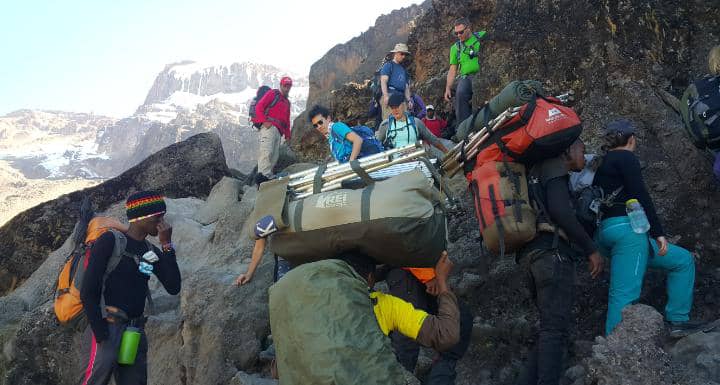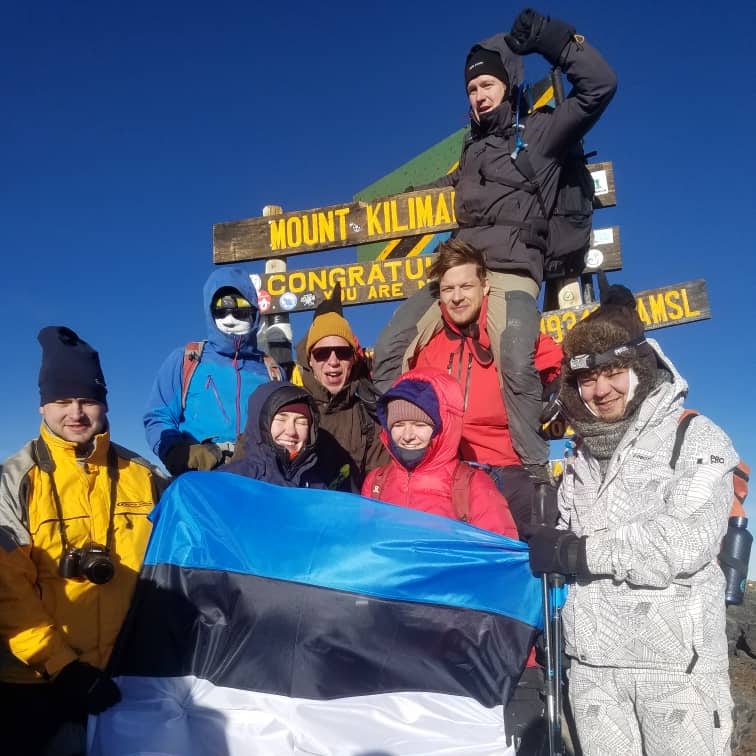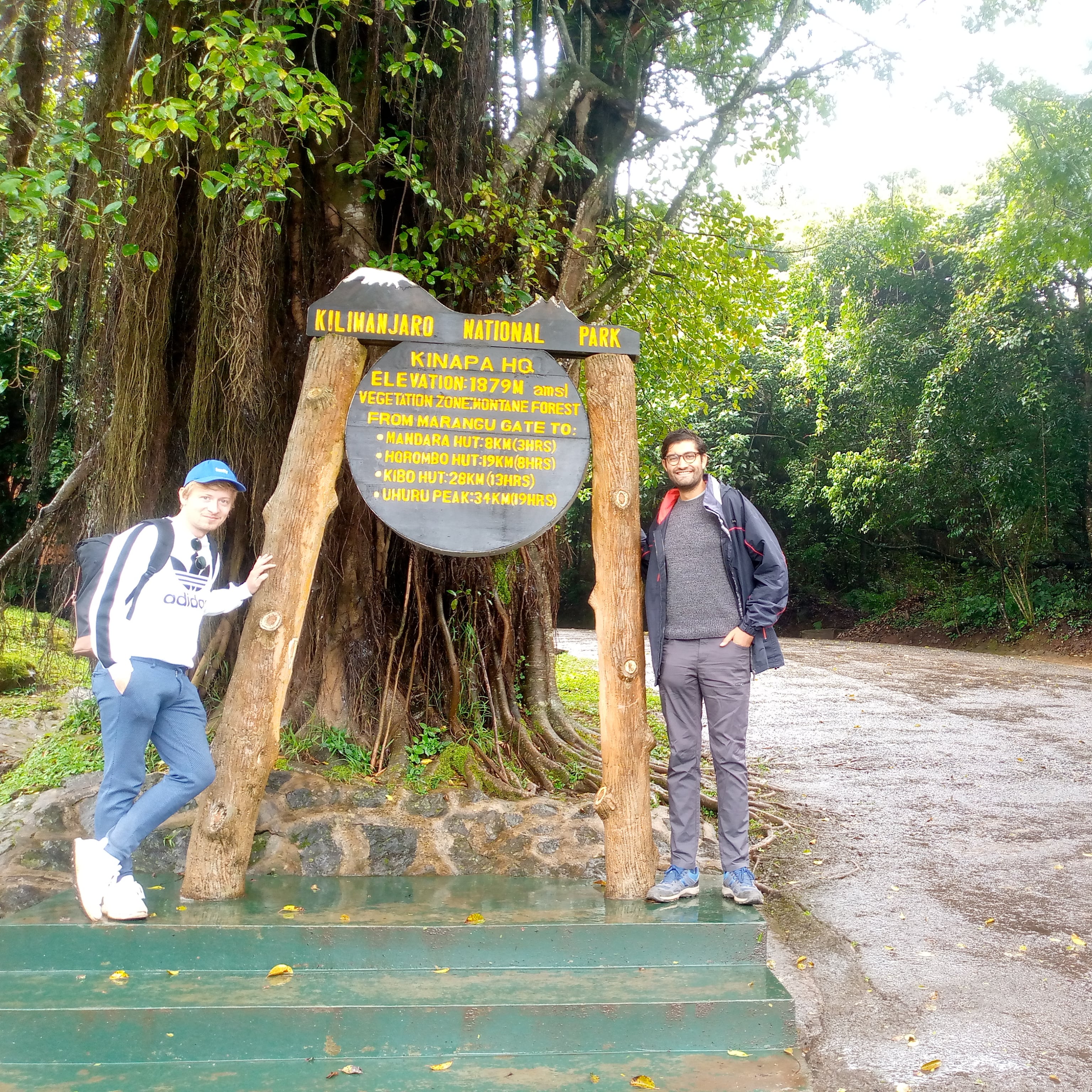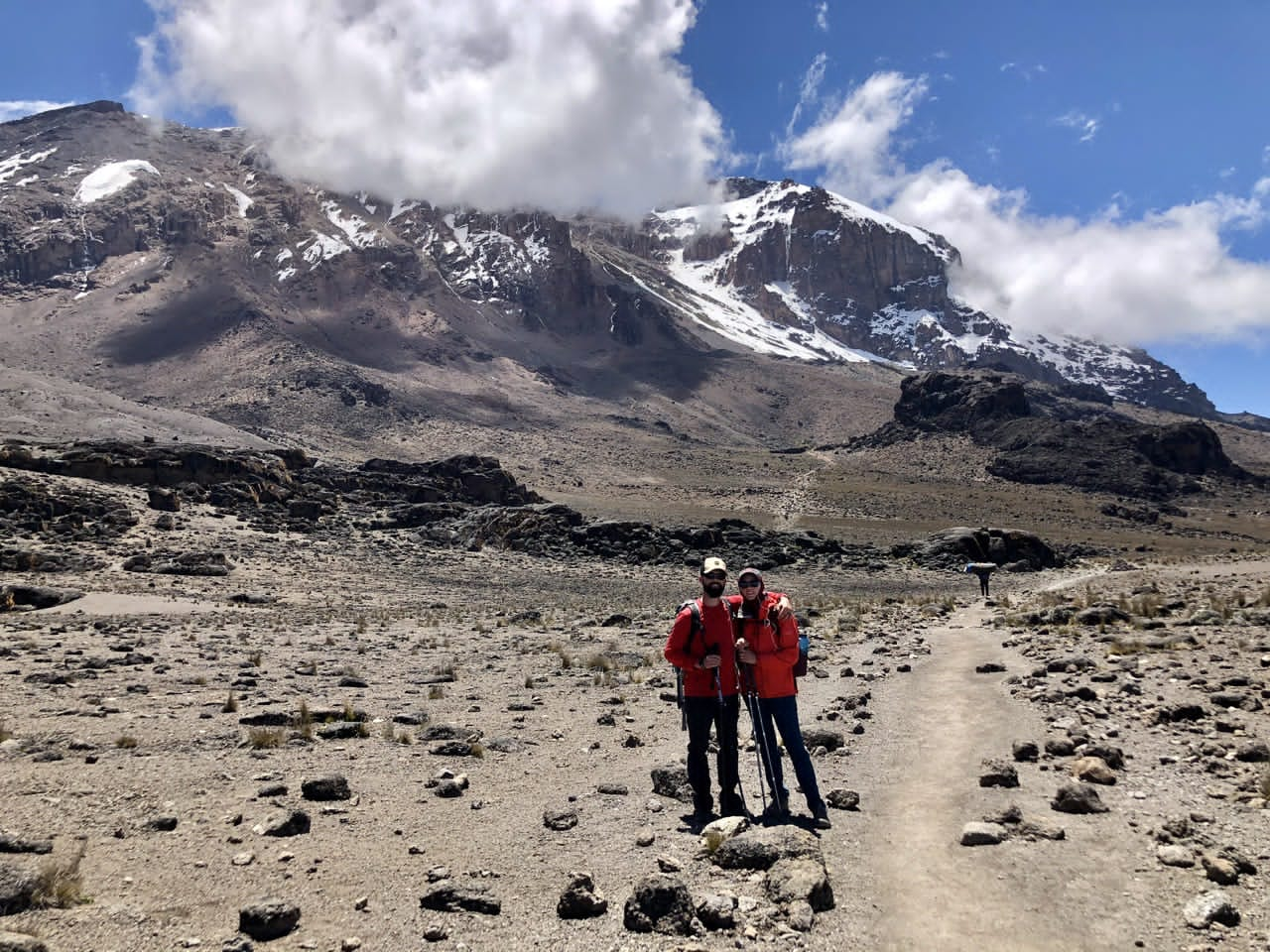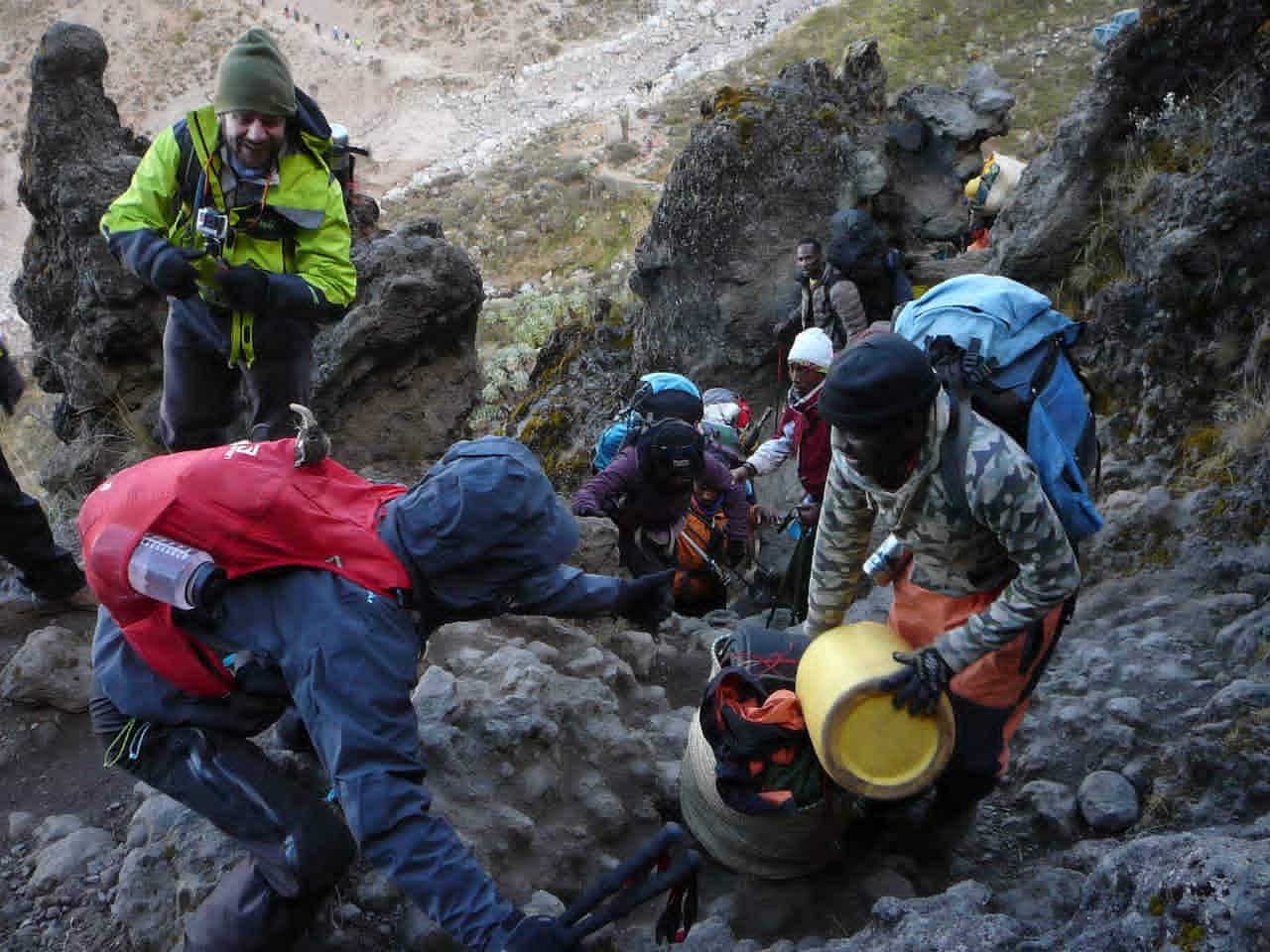Mt.Kilimanjaro 6 Days Rongai Overview.
The Rongai Route begins on the eastern side of Mount Kilimanjaro. It takes approximately three (3) hours to drive from Moshi town to the Rongai Gate. This is the only route that approaches the summit from the eastern side of the mountain, near the Kenyan border. It is also one of the least crowded of the six Kilimanjaro routes. Additionally, the Rongai Route features a less dense rainforest belt compared to the others and offers an easier hike before the final summit attempt due to its gentler inclineThe 6-day Rongai Route on Mount Kilimanjaro is considered relatively easy up until the final summit attempt.
The Rongai Route ascends to Simba Camp and then to Second Cave Camp. From there, we will continue north, climbing high over the Third Cave Campsite before reaching Kibo Hut, which serves as the base camp. Kibo Hut offers both hut and campsite accommodations, as does Horombo Hut.
The summit attempt begins from Kibo Hut at 4,720 meters in the early morning hours, often timed with the full moon. This is the coldest and windiest part of the journey. However, once the sun rises, we can shed most of our extra layers. After reaching the summit, we will descend back to Kibo Hut and then continue down to Horombo Hut, marking the beginning of the end of your Mount Kilimanjaro trek. For Complete Itinerary and Details for the 6-Days Kilimanjaro Climb via the Rongai Route, click the link below.
DAY-1 : MOSHI TOWN TO RONGAI GATE TO SIMBA CAMP
Starting elevation 900m Moshi Town
Ending elevation 1850m Rongai Gate
Altitude gain 950m
Driving distance 90kms
Driving hours 2-3 Hours
In the morning, after breakfast, you will depart from Moshi and drive to the Kilimanjaro National Park Rongai Gate, home to the world’s tallest free-standing mountain, Mount Kilimanjaro, at 5,895 meters. After arriving at the Rongai Gate, you will complete the registration process, ready to start your Kilimanjaro trek.
It will take some time before the team of guides, chefs, and porters can start the trek, as they need to sort out all the equipment for the seven-day Rongai route. Note that this is also a good time to have your lunch before beginning the first day of trekking.
The average waiting time is one to two hours, depending on the number of tourists on that day. Afterward, we will call you when it's time to start the trek and begin the journey toward realizing the dream of standing at the highest point of Africa, UHURU PEAK (5,895 meters).
RONGAI GATE TO SIMBA CAMP
Starting elevation 1850m Rongai gate starting point
.
Ending elevation 2750m Simba Camp
Altitude gain today 770m
Trekking distance 7kms
Walking hours 3-4 hours
Overnight hut Simba Camp
Elevation Zone Rainforest/MontaneForest
Once the team and registration are ready for the hike, we will start our trekking through the Rongai Route, crossing over the thick forest of pine plantations. We will then enter the natural rainforest. Look for towering eucalyptus trees, bird life, Colobus monkeys, and the bright flowers such as impatiens kilimanjari and impatiens pseudo viola that introduce vibrant colors to the scenery.
There is a possibility of rain in the forest, which can transform the trail into a muddy and slippery experience. Gaiters and trekking poles will be helpful. Shorts and t-shirts should be sufficient, but keep your rain gear and warmer clothing handy.
Note that: the possibility of seeing large animals such as buffalo is high, either during the walk or later in the evening or night. After arriving at Simba Camp, the team will prepare hot drinks such as coffee, tea, and hot chocolate to warm you up while waiting for dinner.
DAY-2 : SIMBA CAMP TO SECOND CAVE CAMP
Starting elevation 2620m Simba Camp
Ending elevation 3450m Second Cave Camp
Altitude gain today 830 m
Trekking distance 7kms
Walking hours 4-5 hours
Overnight hut Second Camp
Elevation Zone Moorland and Alpine zone
Today, our walk is easy, and it will still be possible to spot large animals such as buffalo, eland, and others. You will cross a grassy moorland and heather scattered with volcanic rock formations, which will provide great views of Kibo Peak (5,895 m) and Mawenzi Peak (5,151 m). The ever-changing landscape will surprise you once again with its diverse terrain.
Tourists will also encounter the impressive Senecio kilimanjari, which can grow more than 9 meters in height, along with other unique plants like lobelia, gladiolus, and wild protea kilimanjari. From the Second Cave Camp, we will be above the clouds, offering you breathtaking views of the Kenyan side and the beautiful landscape. This is an easy day meant for acclimatization, which will increase your chances of conquering the highest point in Africa, Uhuru Peak (5,895 m).
DAY-3 : SECOND CAVE CAMP TO THIRD CAVE CAMP
Starting elevation 3450m Second Cave Camp
Ending elevation 3950m Third Cave Camp,
Altitude gain today 500 m
Trekking distance 4.5kms
Walking hours 2-3 hours
Overnight hut Third Cave Camp
Elevation Zone Moorland and Alpine zone and alpine desert
Today, our walk is the easiest and most relaxing day of your trek. Don’t forget that we will still have the opportunity to see large animals such as buffalo, eland, and others. We will continue moving upward, crossing a plateau of grassy moorland and heather scattered with volcanic rock formations, which allows for great views of Kibo Peak (5,895 m) and Mawenzi Peak (5,151 m).
From the Third Cave Camp, we will be above the clouds, and you will be rewarded with stunning views of the Kenyan side and the beautiful landscape. This easy day is truly meant for acclimatization, which will increase your chances of conquering the highest point in Africa, Uhuru Peak (5,895 m).
DAY-4 : THIRD CAVE CAMP TO KIBO HUT
Starting elevation 3950m Third Cave Camp
Ending elevation 4720m Kibo Hut
Altitude gain today 770 m
Trekking distance 9kms
Walking hours 4-5 hours
Overnight hut Kibo Hut ,
Elevation Zone Alpine and Alpine desert zone
Soon after breakfast, the team will continue ascending today. The hike to Kibo Hut (4,720 m) is a bit challenging, but don’t worry; if you take it slowly, you will reach Kibo Hut. We will traverse the “Saddle” area, which lies between the peaks of Mawenzi and Kibo in an alpine desert. This region is very dry, and there is no water available at the camp; however, all the water you need will be carried by the team.
After arriving at Kibo Hut, an early dinner will be served so we can rest before attempting the summit later that night. The guides will provide a detailed briefing on how to prepare for summit night, so please aim to get to sleep early by approximately 19:00.
DAY-5 : KIBO HUT TO UHURU PEAK
Starting elevation 4720m Kibo Hut
Ending elevation 5895M
Altitude change 1175m
Trekking distance 7 kms
total time to be used to uhuru peak 6 - 8.5 hours
From Kibo Hut to Gilman's Point is the most mentally and physically challenging part of your trek on Mount Kilimanjaro. However, reaching this goal will provide a great sense of achievement, reminding you that this is your Kilimanjaro experience—make the most of it. The typical departure time for this hike is around midnight.
We will start our hike with a long and tough climb from Kibo Hut at 4,720 meters to Gilman's Point at 5,681 meters. This ascent can be quite difficult, but once we reach Gilman's Point, the hardest part will be behind us. While Gilman's Point marks the top of the ridge, it is not the highest point on the mountain; that honor belongs to Uhuru Peak at 5,895 meters (Uhuru means "freedom"). Before reaching Uhuru Peak, we will pass Stella Point at 5,720 meters, which serves as a junction point from Barafu.
From Gilman's Point, it becomes easier to reach Uhuru Peak. This final stretch typically takes about 1 to 2 hours, allowing you to fulfill your dream and exclaim, "Wow! I made it to Kilimanjaro!"—the highest free-standing mountain in the world and the peak of Africa.
It is important not to stay at Uhuru Peak for too long, as acute mountain sickness can affect climbers after reaching the summit. A recommended time of 10 to 15 minutes is sufficient to enjoy the breathtaking views and take photos before heading back down.
After leaving Uhuru Peak, we will descend back to Kibo Hut via the same route. This descent typically takes 3 to 4 hours, where we will take a short break at Kibo Hut before having lunch and then continuing our hike down to Horombo Hut.
KIBO HUT TO HOROMBO HUT
Starting elevation 4720m Kibo Hut
Ending elevation 3720m Horombo Hut
Altitude change 1000m
Trekking distance 9kms
Walking hours 2-3hours
Overnight hut Horombo Hut
After enjoying a nice little rest and having breakfast or lunch, we will gather our belongings and prepare to head to Horombo Hut. Here, we will have dinner and enjoy some well-deserved sleep.
It is important to note that you should avoid staying too long at Kibo Hut after the summit attempt at 4,720 meters, as the high altitude can increase the risk of Acute Mountain Sickness (AMS). A stay of 1 to 2 hours is sufficient before the team calls you for the next shift to Horombo Hut at 3,720 meters, where the air is fresher and more conducive to recovery.
DAY-6 : HOROMBO HUT TO MARANGU GATE
Starting elevation 3720m Horombo Hut
Ending elevation 1820M Marangu Gate
Altitude change 1900m
Trekking distance 20kms
Walking hours 5-7hours
Overnight hut Moshi town/Arusha
The great day has finally arrived! Today, we will trek through the moorland zone until we reach Mandara Huts, then continue through the lush rainforest, where various species of monkeys and the endemic Impatiens kilimanjari flower thrive.
Upon arriving at the Marangu Gate, we will need to sign out. All successful climbers will receive a certificate of completion from the national park. Climbers who reach Gilman's Point (5,681 meters) and Stella Point (5,720 meters) will receive green certificates, while those who reach Uhuru Peak (5,895 meters) will be awarded gold certificates.
After receiving your certificate, you'll be driven back to your hotel in Moshi or Arusha, where you can finally enjoy that long-awaited hot shower and a well-deserved celebration. This is also a great time to express your appreciation to the team by handling tips for the guides, chefs, and porters who supported you throughout the climb.
From here, we will assist you with plans for your next destination, whether it's heading to the airport for your return flight or embarking on an exciting safari tour to explore more of Tanzania’s breathtaking natural wonders. The adventure doesn’t have to end here—there’s so much more to discover in this beautiful country!
The tourist will have to pay $2295.00(P/P) price based on 2 person include the following services as it listed on the table below. for any query please call us or send us a message for clarifications from our team. Book This Package Now
SERVICES WE OFFER FOR KILI TREKKING
Airport pickup on arrival and return on departure time .
2 Nights hotels, meaning full one before climb and after climb.
All transfers to the mountain and back to Moshi town.
Professional, experienced, mountain guides, cookers, and porters
Guides, Porters, and Cooker salaries.
waterproof, four-season mountain sleeping tents (on twin sharing basis).
Sleeping Mattress. (Not via Marangu route)
Emergency Oxygen Cylinder.
Three meals on Mountain (breakfast, lunch, and dinner).
Purified or Boilled drinking water while on the Mountain.
Mess tents with tables and outdoor chairs.
VAT (18% ) and All government fees.
SERVICES WE NOT OFFER FOR KILI TREKKING
Tanzania Visa.
Hotels and Transfers (available as an optional add-on).
Personal trekking equipment such as sleeping bags, hiking boots, clothes, etc (available for rent in here Tanzania too; don't stress if you forget some of the trekking equipment).
Tips and gratuities (Recommended Tipping Amount Per Day; Head guide $20++; Ass.Guide $18++;, cooker $15++;, Summit Porter $12++;, Waiter $12++;,
Porter $10++;).
Portable flush toilet with the toilet tent as an add-on, please see we will need you to pay an extra 150$ per toilet.
Travel insurance.
Personal Expenses (e.g. laundry, telephone, beverages, etc.).
Meals not listed in the itinerary.
Liquors, beers, and bottled beverages.
Related Mount Kilimanjaro Best Routes Options
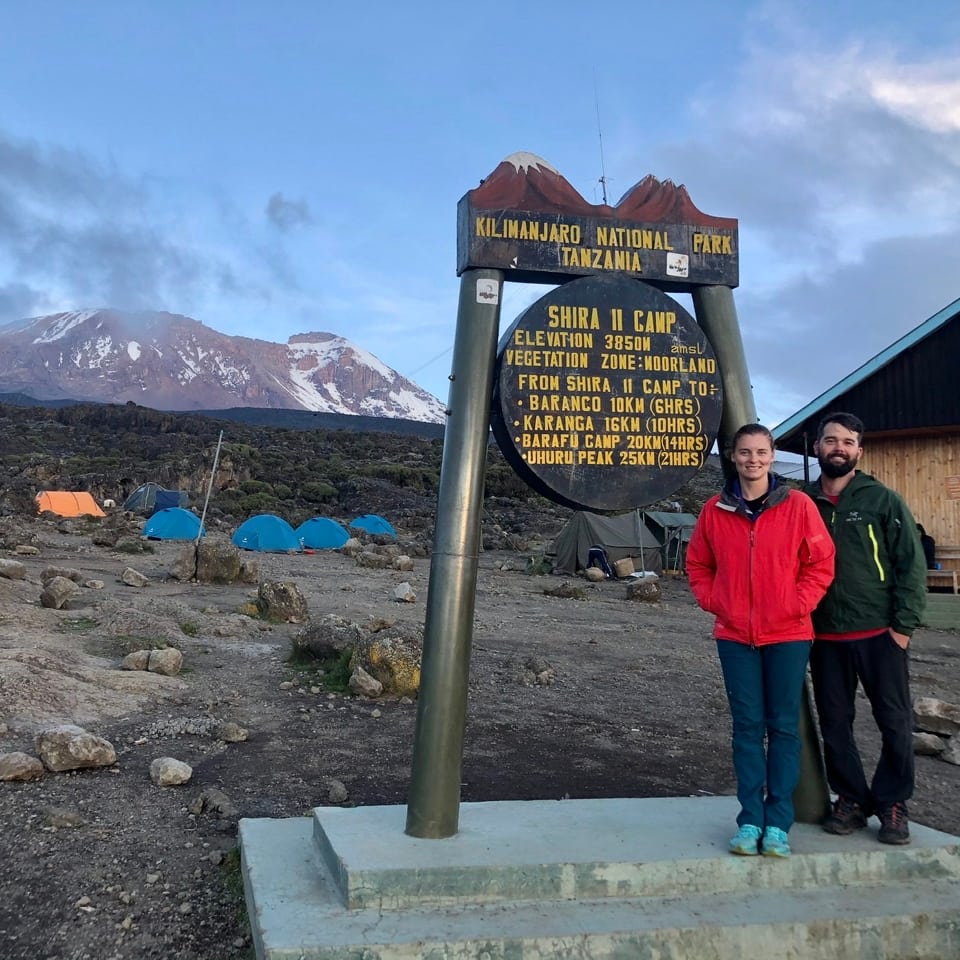
$2485.00(P/P)
Lemosho is extremely beautiful and offers a partly untouched landscape as well as varied flora and fauna. Also for the best successful climb.
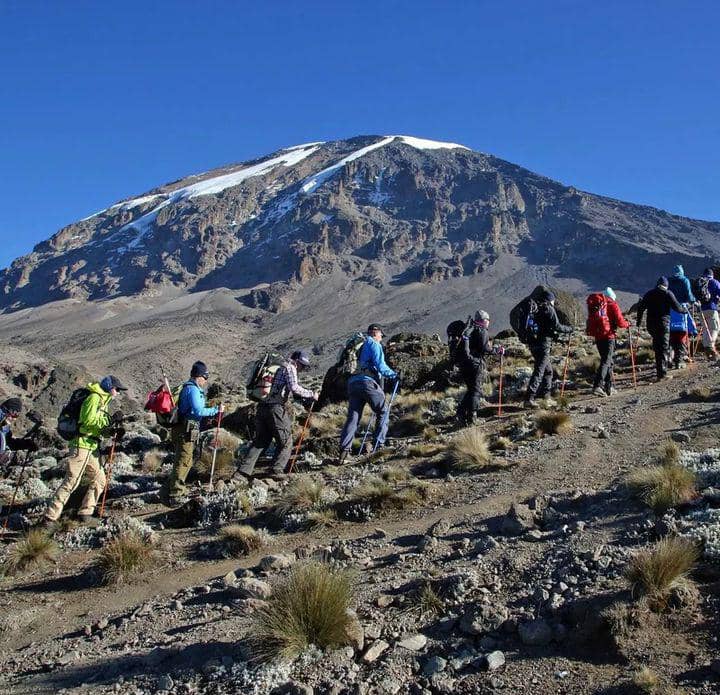
$2315.00(P/P)
Machame Route is the second most popular route to summit Mt.Kili after the Lemosho route, the route approaches from south-west.
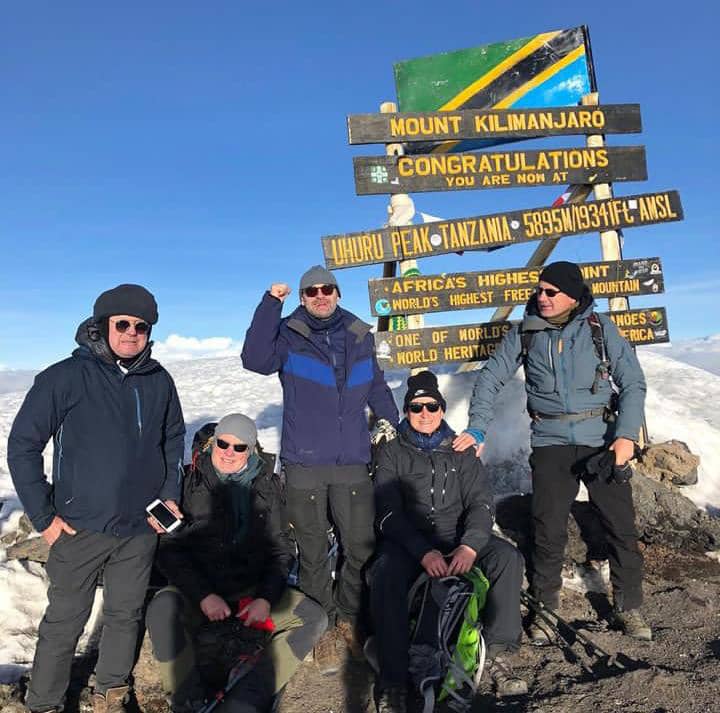
$1865.00(P/P)
Marangu route is widely known as a Coca-Cola route due to its easiest and comfortability, the only way offer hut and beds on the mountain.


